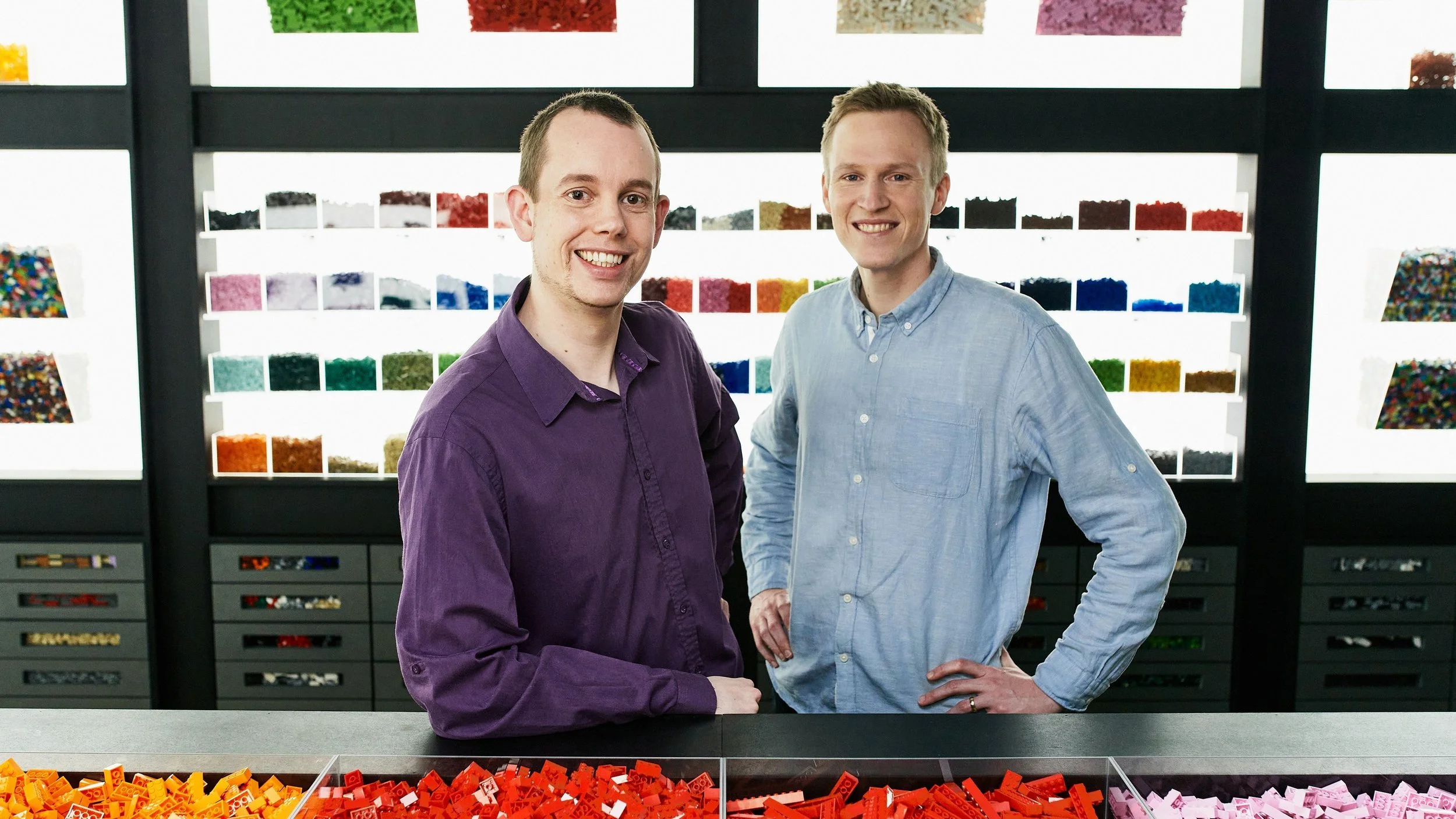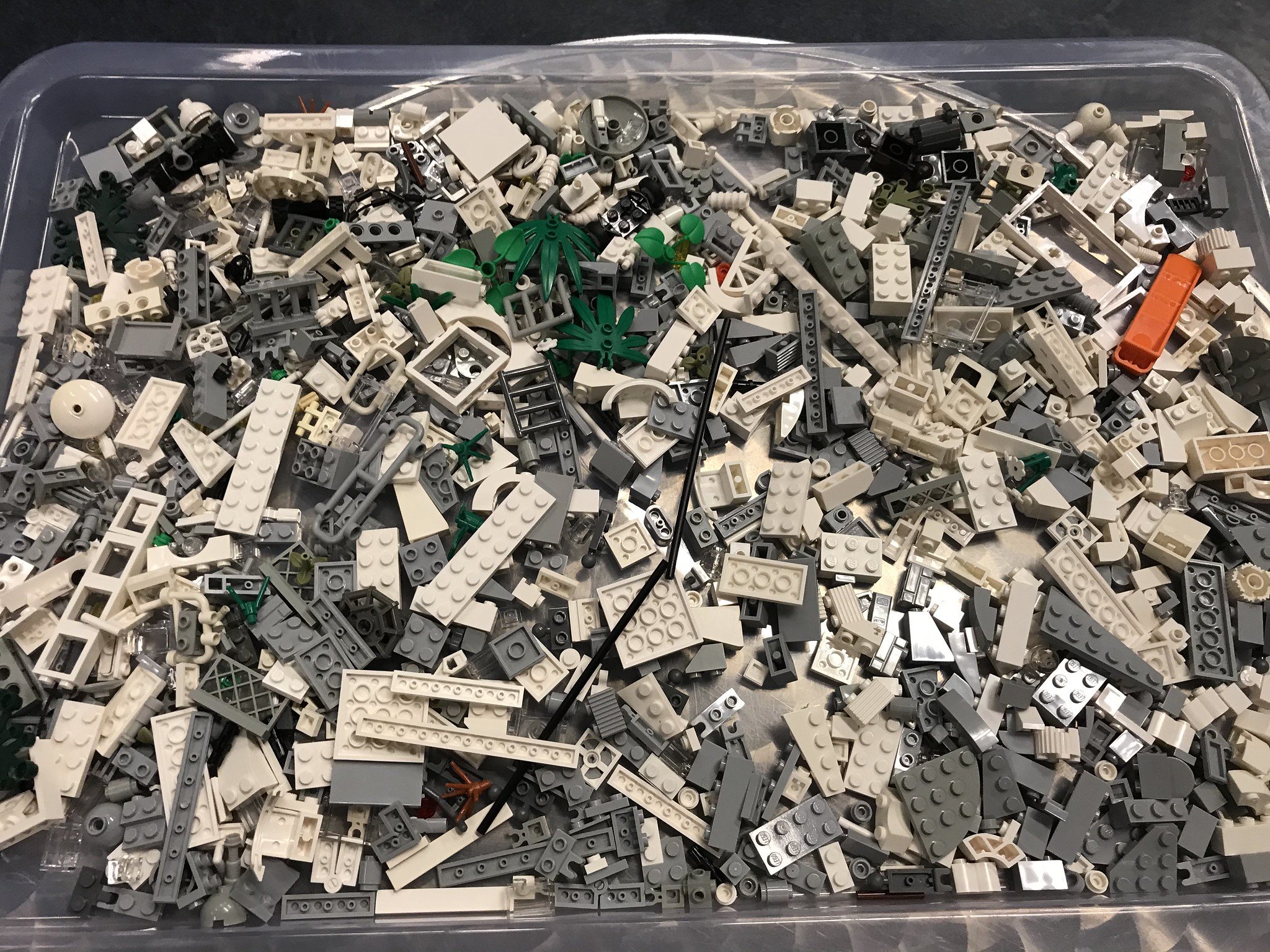Preparing for LEGO Masters Denmark, Part 2: Twists and Time Management
/Today’s guest article comes from Esben Kolind who competed on LEGO Masters Denmark. In this series, he shares his experiences as an AFOL on the show from casting to filming and everything in between. To read Part 1 of the series first, click here.
In the last installment of this series, I shared how I made contact with LEGO Masters, found and became partners, prepared for the casting session, got cast, and prepared for the challenges we thought might come. This is where the story goes from there.
Prepping and Practicing
When I talk to someone about my participation in LEGO Masters, their first question is always: “Did you really build for 12 hours straight?” And the answer is "no". In fact, five full days were reserved for shooting the first episode. Everything was new to both the cast and production team. Episode 2 (two challenges) and the final episode (25 hours of building time) each stretched over four days. The remaining five episodes were each recorded over three days. (This type of schedule is not the same for every version of the show. I’ve heard the US version is much more streamlined.)
The typical schedule for a twelve-hour building challenge included the introduction to the challenge and four hours of building on day one. The second day had six hours of building, while the third day saw two hours of building, followed by the presentation and rating of the models. In addition, each day would feature a COVID-19 test, breakfast, make-up, short breaks every two hours, lunch, and one or more rounds of interview questions. All in all, the recording days lasted from 7 am until 7 pm—significantly longer than my normal office working hours.
We recorded Monday to Thursday. Some of the contestants stayed at a nearby hotel, returning home to their families during the long weekends. I was lucky to live just a ten-minute bike ride from the studio, so it seemed to my wife and kids like I just had some very long working days for two months.
In fact, as we were told to keep our participation in LEGO Masters a secret, I simply told my kids (aged three and six at the time) that I was part of a special project at work and introduced my building partner Lasse as a new colleague. They didn’t question why Lasse would show up in our house and follow me straight to my LEGO room where we would spend the nights preparing what to build the following day.
With some of the episodes split by a weekend, we sometimes had several days to plan the rest of a build. We made timetables detailing who should build what in each two-hour slot of the remaining building time and estimated how long each part of the build would take. We revisited the timetable in every studio break to see if we were on track or had to reschedule.
I tested different building techniques for the most important aspects of our model using my own bricks while Lasse preferred to build digital models (at an incredible speed), which he would memorize for the next recording day.
When we were not physically in the studio recording episodes, we could Google, plan, and build with our own bricks as much as we wanted—even in the short breaks throughout the day. We were also allowed to take a few photos of the state of our build at the end of each recording day. We had, however, one simple rule: Nothing could be taken in or out of the LEGO Masters studio. No notes, sketches, bricks, or phones.
After one of the first recording days, I collected five to ten pieces in white and grey of almost all the different brick types in my collection that were also present in the Brick Pit. Those bricks would remain on my table in the break room for the remainder of the recording period, allowing us to do quick prototypes and discuss options between the recording sessions. This came in handy several times.
Twists of Fate
We had all figured out that there would be a twist to the first episode. The first episodes of the international seasons also included a twist! We had been challenged to construct a universe on our part of a large volcano island. This was similar to a challenge from the Australian version where each team built a universe on an island and then -TWIST- had to build a vehicle in the same theme to visit the neighboring universe.
Guessing that we would face the same twist, Lasse and I spent the night after Day 3 planning such a vehicle. We had built a Klondike-like gold mining village, so we designed a huge bi-plane aircraft with a rotating propeller, lights, and even working flaps controlled from the cockpit. We chose the color red to give us the widest range of available brick types available in the Brick Pit.
Sure enough, the twist was to build a vehicle—not to visit neighbours, but to escape the island!
In addition, we also needed to find time to make the island “uninhabitable” in a way that would fit the theme. We managed to complete both tasks, putting the final bricks put on the aircraft 10 seconds before the time ran out! It would never have been possible to make the aircraft had we not planned the full design the night before.
During that challenge, we built faster and under more stress than at any other point in the show, so it also served as an early lesson to not be too ambitious. We needed to make sure that we planned to have a “finished” model ready at least an hour before the deadline which would provide a buffer if something took longer than planned.
Heroes and Villains
As an example of our planning efforts, I will describe our build process for the Superheroes/Villains challenge in detail. We selected our hero/villain and a sidekick from a range of Collectible Minifigures. We selected Pyjama Girl (CMF 20) as our main villain and her big brother Drone Boy (CMF 20) as her sidekick.
We had an idea to build a children’s room that would feature all sorts of “evil” traps seen from a kid’s point of view. As the minifigures were kids, we decided to build the room in “double minifigure scale”. Based on our lessons from watching the international episodes, we decided on building a diorama with two walls instead of a full hideout, giving us plenty of space to show the kids’ shenanigans.
On Day 1 when the challenge was revealed, I focused on building the backdrop which did not require a lot of planning. Lasse built the large drone with working propellers and a mechanism to actually lift it off the ground. The picture above shows how far we had come after building on Day 1.
That evening, we brainstormed what the childrens’ room should include: Classic traps (marble balls, trip wire, even LEGO bricks to step on), games, a drone army, small evil rabbit robots and even miniature LEGO sets. For example, Lasse designed a mini version of the LEGO Star Wars Imperial Star Destroyer, originally designed by our LEGO Masters judge, Søren Dyrhøj.
While I created prototypes for a number of the smaller builds, Lasse made a digital design of the centre piece: a giant killer rabbit robot controlled by Pyjama Girl. In the studio the next day, he built the robot from memory in less than 30 minutes!
Similarly, I would churn out the smaller builds really fast, not having to consider the design or bricks to use. The preparation allowed us to spend more time on the battle scene—a community build, which was the second part of the challenge.
We would be judged on both builds but had to coordinate with the other team how to construct the battle scene and how much time to invest in it. This was an interesting addition to the regular challenges and caused us to re-schedule our detailed timetable several times.
Our final villain’s lair ended up as we had intended, although I would probably choose a lighter colour for the floor if we had to build it again. We came in the second spot and were praised for a clear story with lots of imagination and humorous builds. We avoided several possible pitfalls thanks to our preparations and watching similar episodes from the international seasons.
But would that continue for the rest of the season? Do our strategies pay off, and does the winners circle await us? Stay tuned to the finale of this series to find out! [Now available!]
How would you prepare while being on LEGO Masters? Let us know in the comments below!
Do you want to help BrickNerd continue publishing articles like this one? Become a top patron like Charlie Stephens, Marc & Liz Puleo, Paige Mueller, Rob Klingberg from Brickstuff, John & Joshua Hanlon from Beyond the Brick, Megan Lum, and Andy Price to show your support, get early access, exclusive swag and more.
























